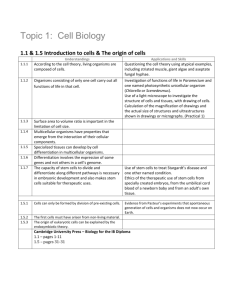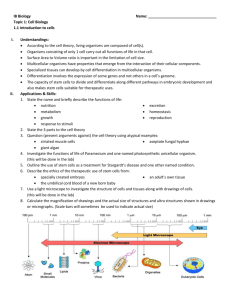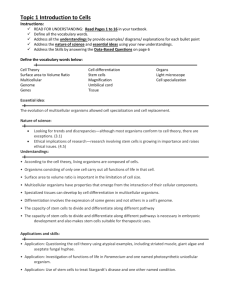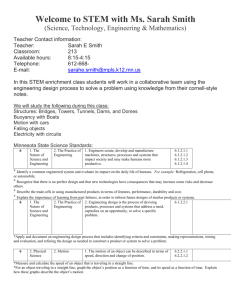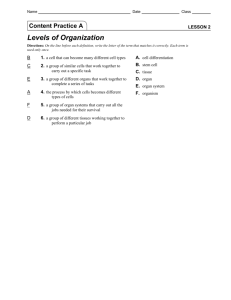Potential command term assessment statements Topic 1: Cell
advertisement
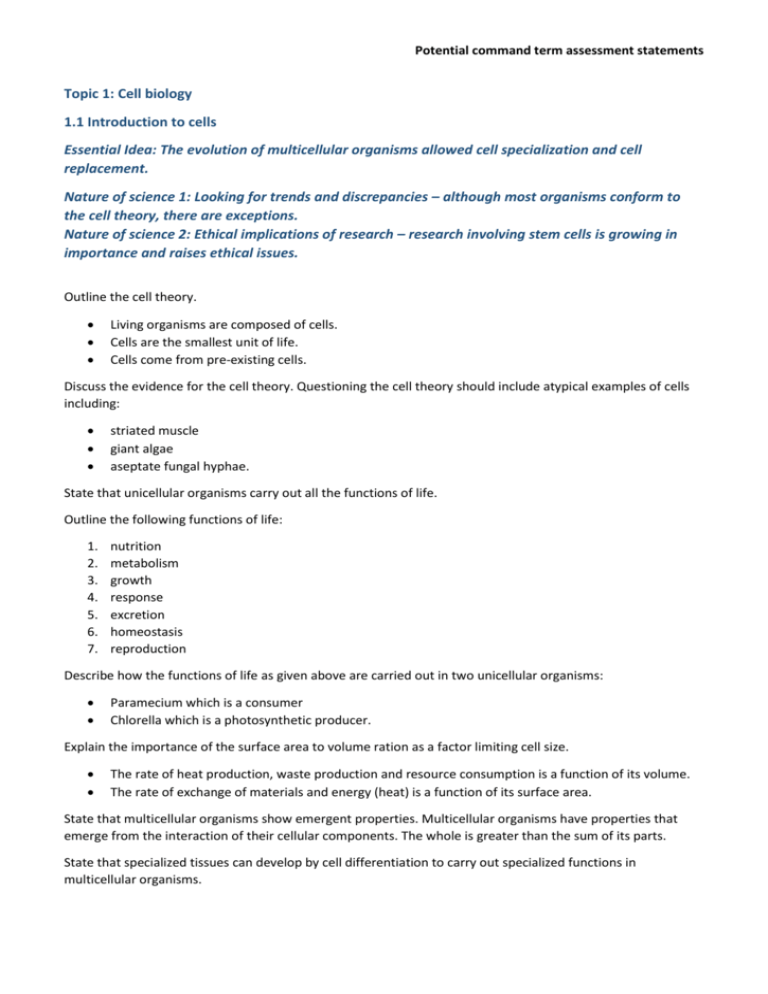
Potential command term assessment statements Topic 1: Cell biology 1.1 Introduction to cells Essential Idea: The evolution of multicellular organisms allowed cell specialization and cell replacement. Nature of science 1: Looking for trends and discrepancies – although most organisms conform to the cell theory, there are exceptions. Nature of science 2: Ethical implications of research – research involving stem cells is growing in importance and raises ethical issues. Outline the cell theory. Living organisms are composed of cells. Cells are the smallest unit of life. Cells come from pre-existing cells. Discuss the evidence for the cell theory. Questioning the cell theory should include atypical examples of cells including: striated muscle giant algae aseptate fungal hyphae. State that unicellular organisms carry out all the functions of life. Outline the following functions of life: 1. 2. 3. 4. 5. 6. 7. nutrition metabolism growth response excretion homeostasis reproduction Describe how the functions of life as given above are carried out in two unicellular organisms: Paramecium which is a consumer Chlorella which is a photosynthetic producer. Explain the importance of the surface area to volume ration as a factor limiting cell size. The rate of heat production, waste production and resource consumption is a function of its volume. The rate of exchange of materials and energy (heat) is a function of its surface area. State that multicellular organisms show emergent properties. Multicellular organisms have properties that emerge from the interaction of their cellular components. The whole is greater than the sum of its parts. State that specialized tissues can develop by cell differentiation to carry out specialized functions in multicellular organisms. Potential command term assessment statements Explain that cells in multicellular organisms differentiate by expressing some of their genes and not others in a cell’s genome. State that the capacity of stem cells to divide and differentiate along different pathways is necessary in embryonic development and also makes stem cells suitable for therapeutic uses. Outline the use of stem cells to treat Stargardt’s disease and one other named condition. The use of stem cells in the treatment of disease is mostly at the experimental stage, with the exception of bone marrow stem cells. Scientists, however, anticipate the use of stem cell therapies as a standard method of treating a whole range of diseases in the near future, including heart disease and diabetes. Discuss the ethics of the therapeutic use of stem cells from specially created embryos, from the umbilical cord blood of a new-born baby and from an adult’s own tissues. Practical 1: Demonstrate the use of a light microscope to investigate the structure of cells and tissues. Draw cells from light microscope investigations. Drawings must be accurate, to scale and use clean smooth pencil lines. Draw scale bars to indicate the actual sizes in drawings and micrographs. Calculate the magnification of drawings and the actual size of structures and ultrastructures shown in drawings and micrographs. International-mindedness: Stem cell research has depended on the work of teams of scientists in many countries who share results thereby speeding up the rate of progress. However, national governments are influenced by local, cultural and religious traditions that impact on the work of scientists and the use of stem cells in therapy. Theory of Knowledge 1: Discuss the differences between the living and the non-living environment. How are we able to know the difference between when an organism is alive and then dead? When does life begin? To what extent is life an emergent property? How do we know if a substance or particle shows some of the characteristics of life and not others, if it is living or nonliving? How do we know if viruses are living or nonliving? Theory of Knowledge 2: There are ethical issues involved in stem cell research, whether humans or other animals are used. Use of embryonic stem cells involves the death of early-stage embryos, but if therapeutic cloning is successfully developed the suffering of patients with a wide variety of conditions could be reduced.
